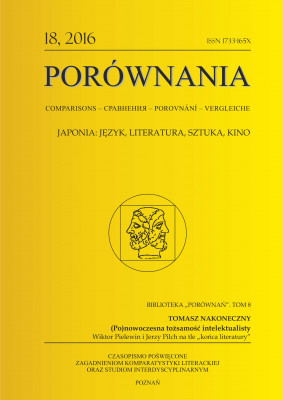The analysis of similarities and differences in the interpretations of the skeleton as a supernatural being in Christian Western Europe and Japan
The human skull and the skeleton are symbols unmistakably associated with death; one would even call them ‘universal’. However, their true meaning may differ depending on cultural and religious trends that shaped them. In Christian Western Europe and Japan, the dry naked human bones were not to lie lifelessly in graves; people imagined them to move and dance. The Europeans interpreted the skeleton as an actual person. It became a personification of death, the Death. On the other hand, the Japanese treated the skeleton as a graphic representation of a vengeful soul that came back to the world of living to execute revenge on their enemies. The analysis of similarities and differences in the interpretations of the skeleton as a symbol related to death are based on historic, literary and artistic sources.
| Article Title | Type | Size |
|---|---|---|
| 03 Agnieszka Paczkowska | [pdf] | [376 KB] |
